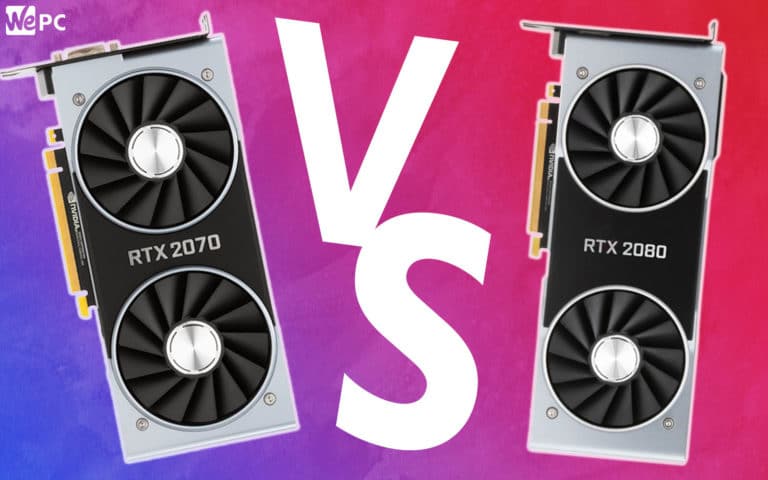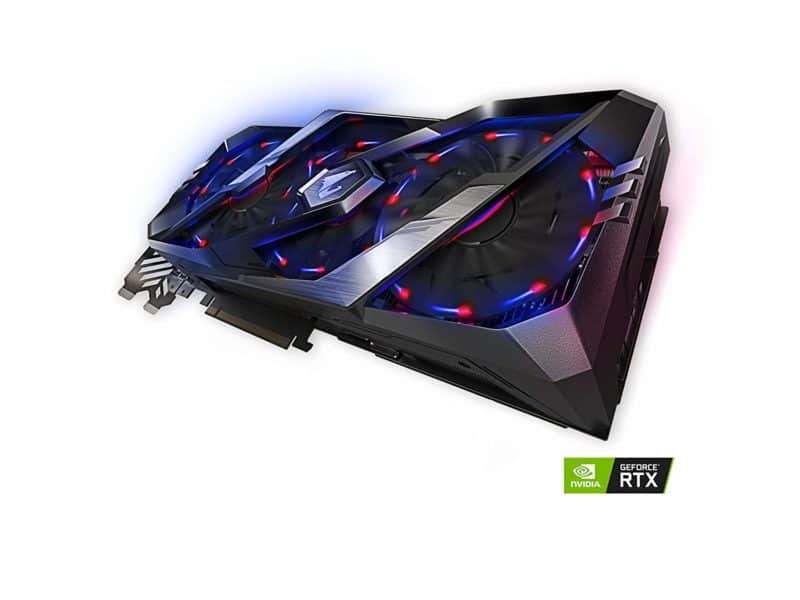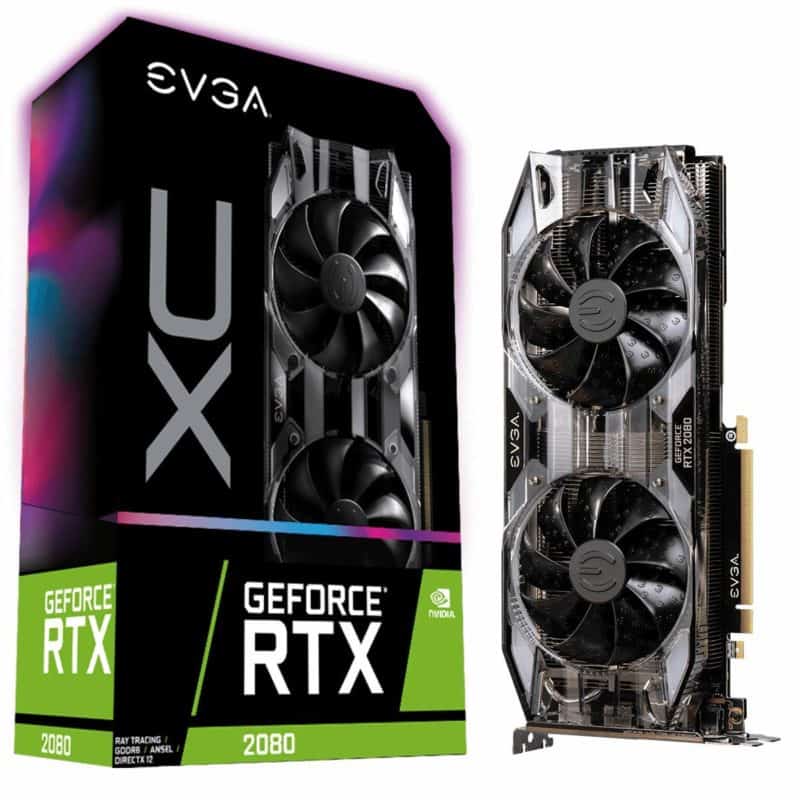RTX 2070 vs RTX 2080
In this article, we take a look at two of Nvidia’s latest graphics cards available to consumers at the moment, the GeForce RTX 2070 and RTX 2080

If you’re here, you’ve probably decided to look into the new GeForce 20 series of Nvidia GPUs. These cards burst onto the scene in late 2018 boasting massive graphical innovations, the foremost of which is their 4k gaming and ray-tracing capabilities. Sure, they used to break the bank back in 2018, but even the higher-end cards like the RTX 2070 and RTX 2080 have lowered in price during the last year.
That’s why now is the perfect time to look into the GeForce 20 series, especially with the somewhat disrupted rollout of the GeForce 30 series that’s only going to accelerate the affordability of these 20 series GPUs. That said, buying any GPU is still an investment and the 2070 and 2080 are more similar than they are different, so you need to do your due diligence before deciding which one is best for you.
Here we’ve broken down the most important specs that a consumer needs to know. Below you’ll find a breakdown of Nvidia’s new Turing architecture, resolutions, built-in cooling, physical dimensions, memory capacity, and ray-tracing ability. After all of that, we’ve also summarized which one is best for which consumers to help you make your decision.
Architecture
Fortunately, we don’t need to do much comparison between microarchitectures here since both the RTX 2070 and the RTX 2080 have the same construction process. That’d be the 12 nm FinFET fabrication process facilitated by the TSMC, Nvidia’s long-standing partner that consistently innovates on tighter and more compact nanotechnology. Compact tech means that more transistors can be arranged in a smaller surface area, resulting in a more efficient set of cards.
As we said, it was the GeForce 20 series that mainstreamed ray-tracing technology via a combination of processing cores. Along with the standard CUDA cores that you usually find in Nvidia cards, they’ve introduced RT cores and Tensor cores. RT cores manage ray-tracing metrics such as lighting arrangement, reflections, and ambient occlusion. Tensor cores, also called AI cores, manage matrix operations and provide support for artificial intelligence, which is expected to become more important to the personal computing industry in the next decade.
The 2070 in particular has 2,304 CUDA cores while the 2080 has 2,944, so there is an advancement between these two cards. More CUDA cores don’t directly translate to better performance, however, as they take a back seat to clock speed and VRAM, which we’ll get into later.
Resolution
4k is the big draw of the GeForce 20 series thanks to those new cores we mentioned above. This means that you get the most out of the 2070 and 2080 GPUs if you have a 4k display monitor. If you don’t, maybe you need to re-evaluate if you can get away with a cheaper model that will still make for a satisfying experience.
A 1080p or 1440p monitor that’s running with a GeForce 20 card over a GeForce 10 card is still going to look better, of course, but without 4k you won’t be getting a lot of the benefits of these cards. Getting a 4k monitor if you haven’t already got one is also another expense that’s going to make your PC build process more expensive.
As you’d expect, the RTX 2080 is superior to the 2070 model, though only slightly. The 2070 doesn’t run 4k as well as the 2080, so if you have a non-4k monitor then you’ll likely benefit from the 2070 over the 2080. The 2080 has a base clock speed of 1,515 Mhz and a boosted clock speed of 1,710 Mhz while the 2070 has a base of 1,410 Mhz and a boost of 1,620 Mhz.
Cooling
The GeForce 20 series are some of the tightest and densest GPUs that Nvidia has released yet but that means they’re great at generating heat. No one wants a GPU that burns itself out during a prolonged gaming session, so we’d advise that you have a cooling system that’s capable of taming the graphics card you want.
To best plan for this, you’ll want to know the maximum operating temperatures of the RTX 2070 and 2080 cards. For the 2070 card, you should start being concerned if the temperature exceeds 80 degrees Celsius. Some have reported theirs runs well at 80 degrees but 85 degrees should be the upper limit of concern. The 2080, on the other hand, has a stated maximum temperature of 88 degrees Celsius. While this temperature is less than the 94 degrees Celsius that some of the previous GPUs could manage, 88 degrees is still an impressive compromise for the 2080 and is better than the 2070.
Dimensions
If space is an issue in your computer setup, you’ll want to know the exact dimensions of the physical graphics card you’ll be installing. We’ve also got some technical dimensions too so you can appreciate how the 2080 has improved upon the 2070.
The RTX 2070 is a dual-slot card that has a dimension of 229mm x 113mm x35mm while the 2080 is 267mm x 116mm x 35mm. That makes the 2070 the more space-efficient option but only by a few millimeters.
The type of physical processor chip and the die area also matter when talking about dimensions. The 2080 uses a TU104 graphics processor chip with a die area of 545mm2 supporting 13,600 million transistors packed together. The 2070 has a TU106 processing chip instead that has a 445mm2 die size that fits 10,800 million transistors, making the 2080 the more efficient but larger GPU.
Ray Tracing
Both the RTX 2070 and 2080 are capable of ray tracing, though the 2070 is going to struggle more if you’re aiming for 4k 60FPS with ray tracing enabled. Don’t just take our word for it though, there are objective metrics that we can look at thanks to the RT cores each card has.
The RT cores in the 2070 are capable of 42 trillion RTX operations per second against the 2080’s 57 trillion. You see this effect in the ray-tracing rays that get produced per second by each card. For the 2070, that number is 6 billion while the 2080 supports 8 billion ray tracing rays.
VRAM
The Video RAM that’s built into your GPU is important for maintaining graphics that don’t just look good but load data in a speedy manner too. Fortunately for you, the 2070 and 2080 both have a native memory size of 8GB upheld by its GDDR6 memory type across a 256-bit interface. This means the memory speed is the same too at 14 GB per second of memory transfer.
What this also means is that VRAM isn’t an important point of consideration when deciding which card to buy. Instead, judge the 2070 and 2080 on their other merits.
Conclusion
With all of the above in mind, you should be able to decide which card is best for you and your desktop rig. The RTX 2080 is superior in some areas, as you’d expect, but there are practical reasons to get the 2070 instead. If you have a strong 4k display setup and you can afford the higher-end card then there’s little reason to get the 2070 over the 2080 but if your monitor is 1080p or 1440p, you get a lot out of a 2070 for less of the price.






